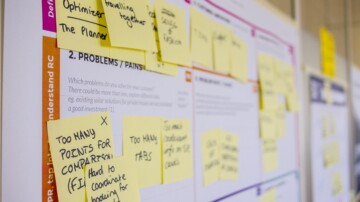Community Foundations, Donor Advised Funds, and Cloud-based Technology – An Insider’s Look At This Winning Trifecta

Just a few months ago, in November 2019, I sat on my front porch and made my donor-advised fund (DAF) grant recommendations via a donor portal within an app on my iPhone while simultaneously sipping a nice glass of wine. I recommended six grants for my 2019 year-end distributions and the entire process required an investment of twenty minutes of my time; and what a wonderful feeling it brought me to know that my local food bank, animal society, homeless shelter, and others will have much-needed, end-of-year support for their missions.
It was 20 years to the month that my wife and I established our DAF at our local community foundation, and I marveled at how technology had evolved over this time period. Gone are the days of emailed forms, handwritten recommendations, and returns by fax or snail-mail.
As someone who’s made his career as an enterprise technology solutions professional, I know first-hand what it takes for our community foundation to make this both possible and – quite frankly – a truly awesome experience for the customer, be it a DAF holder, financial advisor, grant or scholarship applicant, or as a member of a review committee.
Thinking a bit further, I realized that the evolution of cloud-based software supporting the community foundation space offered even greater impact to foundations and the communities they serve. Expenses related to hardware, software, maintenance, upgrades, IT support and internal skills transfers for support is now all-encapsulated in a straightforward subscription.
I must believe that, once a cloud-based strategy was employed, the organizational savings for our community foundation have been significant. Staff members previously preoccupied with supporting technology could now place their focus on more important matters – like the overall mission of the organization, and relationships with constituents. They could now focus on their local charities creating impact, fundraising and, most importantly, thoughtful stewardship of the individuals and organizations who have placed their trust in their local community foundations to manage their assets through donor advised funds, planned gifts, bequests and other charitable vehicles.
It’s evident to my wife and I that our community foundation is now allocating the savings realized to creating more and better outreach, awareness, and donor-experience programs. All of these are not only increasing engagement with current donors, but also creating awareness to an entirely new generation of future donors and volunteers in the community. In the past, we would receive quarterly fund statements and an occasional letter or email about an event. Today, our community foundation is producing and delivering quarterly, if not more frequently, supporter events related to relevant topics in our local community. These events bring together like-minded people with a passion to make an impact, by addressing pressing needs such as housing, employment, diversity, and education to name a few.
In addition to the cost savings being realized through cloud-based solutions by the community foundations that have made the technology transition, additional benefits are quietly being addressed in the background – by the technology providers leading social good. A steady stream of new product enhancements are being added to cloud solutions for the foundations market on a regular basis. These features are the product of client input in the fast-growing community foundation, cloud-solution-user community.
A group of like-minded, social-impact organizations have been focused together on creating the absolute best user experience for system users – inside and outside the walls of the community foundations themselves. Additionally, the supporting technology infrastructures are also being optimized for top-tier performance – for system use, reporting, and donor experience. Gone are the sleepless nights contemplating server and application upgrades and RFPs for the technology-stack enhancements. All of this is left in the hands of technology professionals serving hundreds of comparable organizations throughout North America and beyond.
Community foundations who have not yet gone through a digital transformation are late to the game. Much of what I’m discussing here is due to the fact that the community foundation that holds our DAF has gone through its digital transformation – but the on-demand availability of their computer system’s resources are only a part of it; the integration of their internal systems is another, often more-important part, and they’ve invested in a vendor partnership that provides this fully-integrated, cloud-based technology.
I’ve now finished my glass of wine; and what began as a 20-minute, early-evening, online exercise in supporting our passions in the community unexpectedly took me on a thought journey over a 20-year period of growth, evolution, and impact of the technology in the foundations sector. A short bout of time on my porch – supported by countless resources in the cloud.



